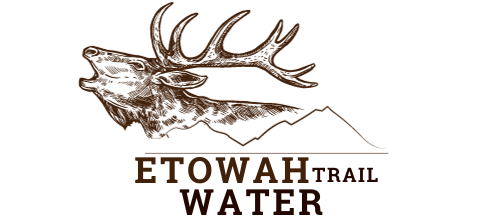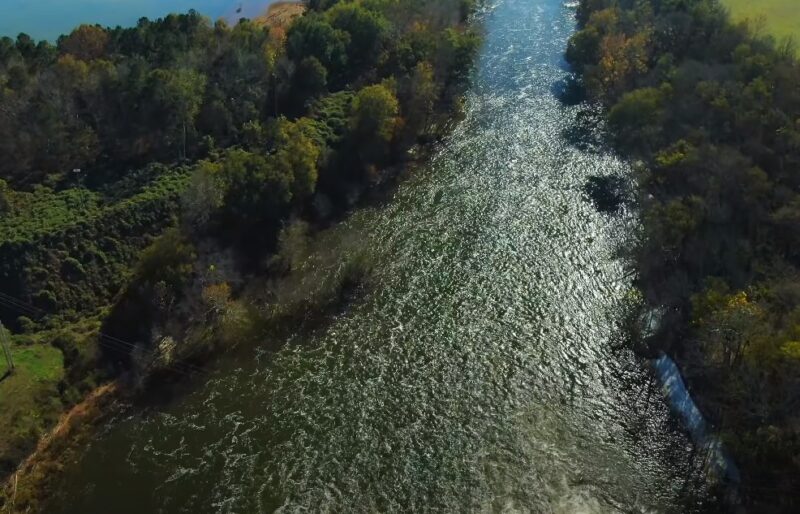The Etowah River, a gem in the southeastern United States, has long been a subject of intrigue and admiration. Its winding path and rich history make it a focal point for both nature enthusiasts and historians alike.
But where does this majestic river conclude its journey? Let’s explore its story and discover the endpoint.
The Basics
The Etowah River, originating in the northern part of Georgia, is one of the primary tributaries of the Coosa River. It ends when it merges with the Oostanaula River in Rome, Georgia.
This confluence marks the beginning of the Coosa River. Its name is derived from the Cherokee word “Etowah,” which means “high tower” or “town.” The river has played a significant role in the history and development of the region. The Etowah River
Historical Significance
This river has been a vital waterway for centuries. Native American civilizations, particularly the Mississippian culture, thrived along its banks, leaving behind impressive archaeological sites like the Etowah Indian Mounds.
Ecological Importance
The ecosystem here is teeming with diverse flora and fauna. It serves as a habitat for various species, some of which are endemic to the region. Conservation efforts have been ongoing to preserve its pristine condition.
Additionally, for those who admire Georgia’s natural beauty, there are captivating waterfalls that are a testament to the state’s diverse landscapes.
Journey of the Etowah River
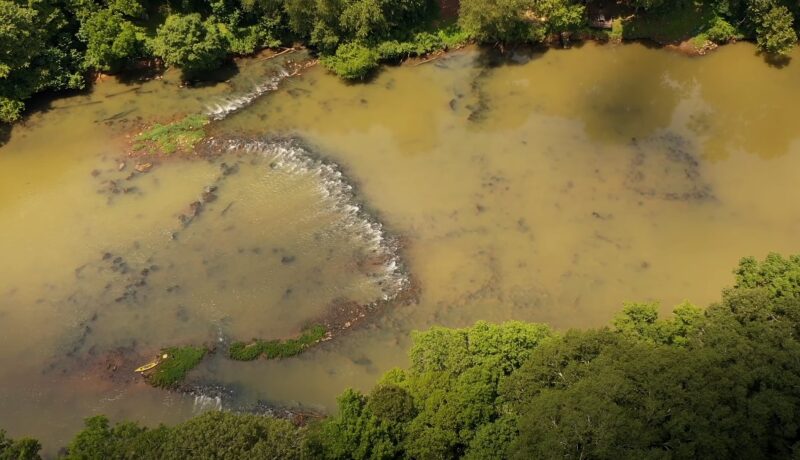
The Etowah River’s journey is both scenic and historically rich. As it meanders through Georgia, it passes through various landscapes, from the Appalachian foothills to dense forests and urban areas.
While its scenic beauty and historical significance are undeniable, the Etowah’s pulse-pounding rapids are equally mesmerizing and offer a unique thrill for adventurers.
Course and Tributaries
The river’s course is influenced by several tributaries that join it along the way. These tributaries not only add volume to the river but also bring with them stories of their own.
Some of the notable tributaries include the Little River and Euharlee Creek.
Human Interaction
Over the years, human settlements have sprung up along the Etowah. These communities have harnessed the river’s resources for agriculture, transportation, and even recreation.
The river has been a lifeline for these settlements, providing them with both sustenance and leisure opportunities.
The Confluence: Meeting the Oostanaula
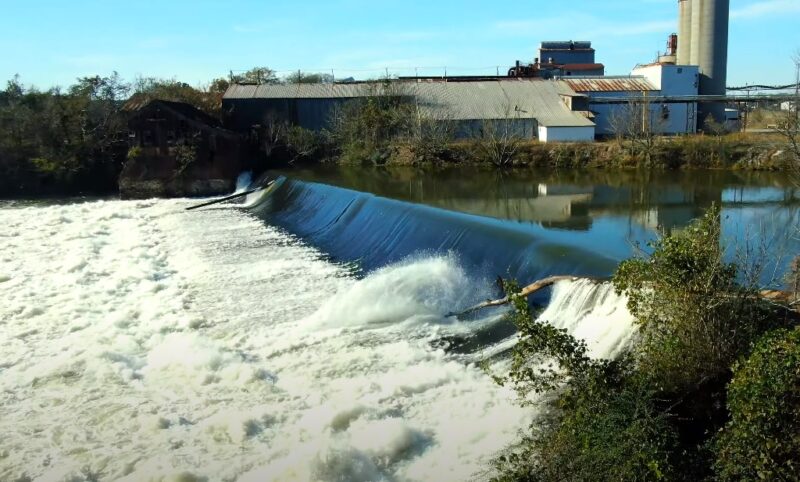
The river’s journey culminates when it merges with another significant river, the Oostanaula. This confluence marks the birth of the Coosa River, a major waterway in the southeastern United States.
What’s the Significance of the Confluence?
The meeting point of the Etowah and Oostanaula rivers is not just a geographical landmark but also a historical one. The city of Rome, Georgia, is situated at this confluence, and it has been a hub of activity for centuries.
Impact on the Ecosystem
The merging of the two streams creates a unique ecosystem. The combined waters bring together species from both rivers, leading to a rich biodiversity.
This confluence area is crucial for the survival of many aquatic species and plays a pivotal role in the region’s ecology.
Historical Sites Along the Etowah
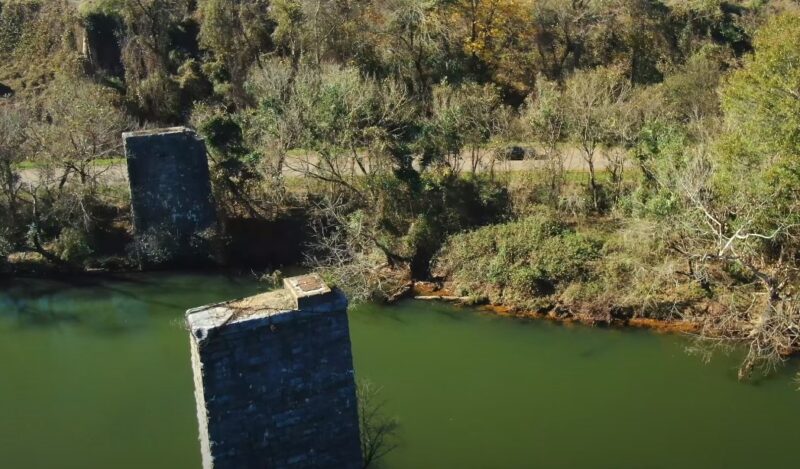
The banks of the Etowah are dotted with historical sites that offer glimpses into the past. From ancient Native American settlements to remnants of the Civil War, the stream has witnessed pivotal moments in history.
Etowah Indian Mounds
One of the most prominent archaeological sites along the stream is the Etowah Indian Mounds. These mounds, which date back to the Mississippian culture, are a testament to the advanced civilization that once thrived here.
The site includes a museum that showcases artifacts and provides insights into the lives of the people who inhabited the region.
Civil War Landmarks
The Etowah River also played a role during the Civil War. Several skirmishes and battles took place near its banks. Today, markers and memorials can be found along the stream, commemorating these events and honoring those who fought.
Some of the notable events are the Battle of Pickett’s Mill, and the Battle of Allatoona Pass, where Confederate forces attempted to seize a crucial supply depot held by Union troops.
Recreational Activities on the River
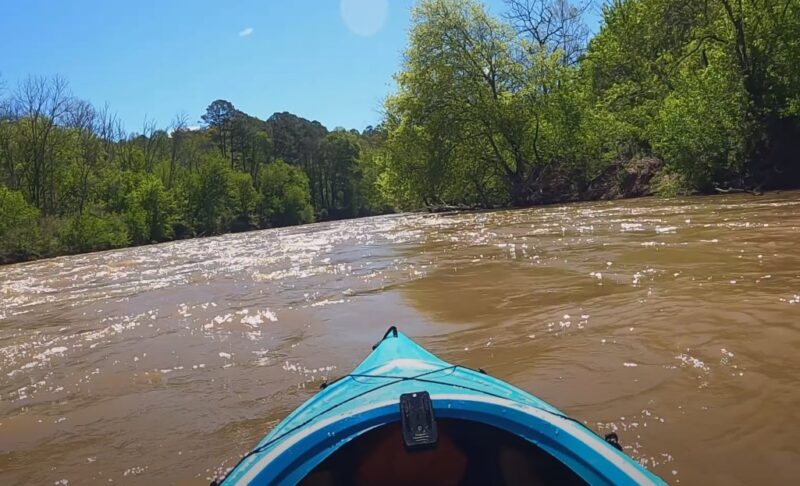
The Etowah is not just a historical and ecological marvel; it’s also a hotspot for recreational activities. Its waters and surrounding areas offer numerous opportunities for adventure and relaxation.
Kayaking and Canoeing
The stream’s gentle currents make it ideal for kayaking and canoeing. Paddlers can navigate through scenic landscapes, encounter wildlife, and enjoy the tranquility of nature.
Several outfitters offer guided tours and equipment rentals for those looking to explore the river.
Fishing
The Etowah is home to a variety of fish species, making it a favorite spot for anglers. From bass to catfish, the river promises a rewarding fishing experience. Local fishing tournaments are also held periodically, attracting enthusiasts from all over.
Conservation Efforts and the Future
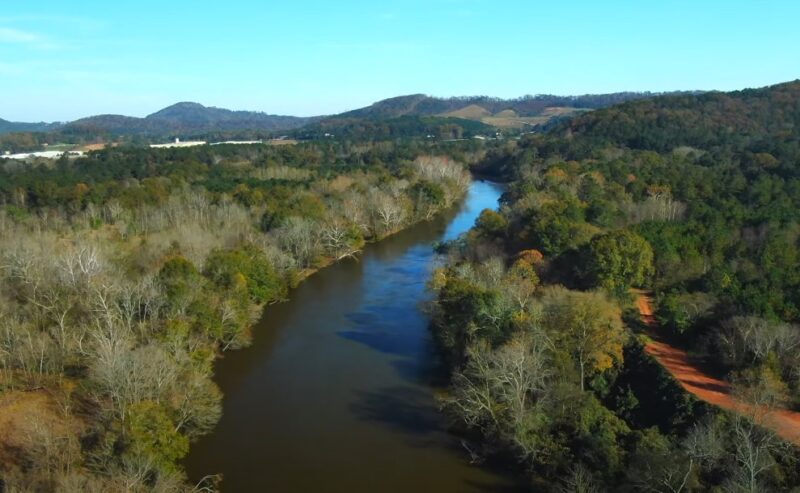
This river, like many natural wonders, faces threats from pollution, urbanization, and other human activities. Recognizing its significance, various organizations and communities have come together to ensure its preservation.
Protecting the Watershed
Efforts are underway to protect the Etowah River watershed. This includes initiatives to prevent pollution, manage stormwater runoff, and restore habitats.
Local governments and NGOs are collaborating to implement sustainable practices.
Community Involvement
The communities along the Etowah play a crucial role in its conservation. Educational programs, clean-up drives, and awareness campaigns are organized regularly. These initiatives aim to instill a sense of responsibility and pride in the stream’s well-being.
The River’s Role in the Local Economy
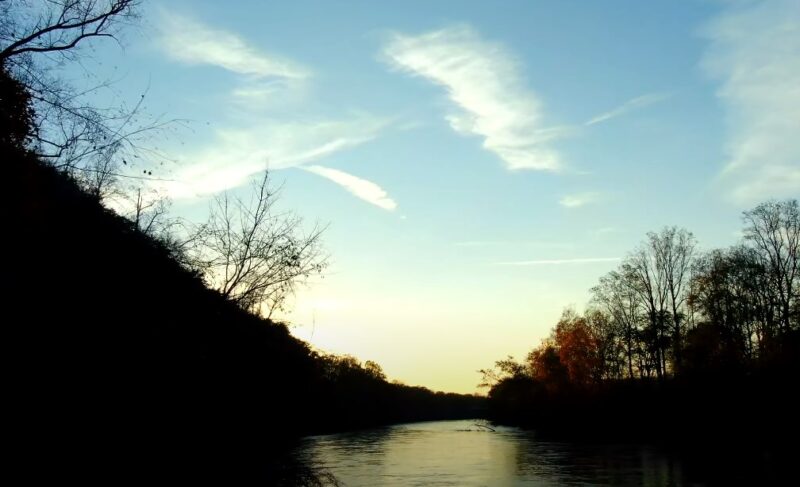
The Etowah has been an economic lifeline for the communities along its banks. Its waters have powered industries, supported agriculture, and fostered trade for centuries.
Water-Powered Mills
In the past, the river’s flow was harnessed to power gristmills and sawmills. These mills played a pivotal role in the local economy, processing grains and timber for the communities.
Remnants of some of these historic mills can still be found along the stream.
Agricultural Support
The fertile lands along the Etowah have been cultivated for generations. The river provides the much-needed water for crops, ensuring bountiful harvests.
From cotton plantations in the past to diverse crops today, the stream continues to sustain agriculture.
The Etowah in Literature and Culture
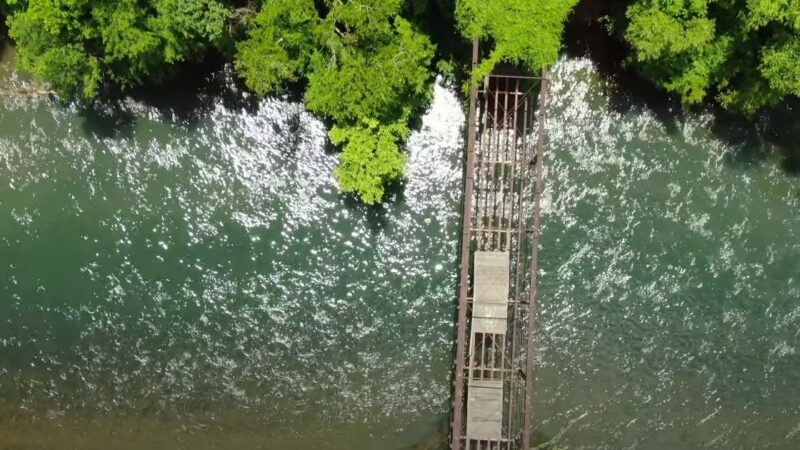
The beauty and history of the Etowah have inspired artists, writers, and musicians over the years. Its influence can be seen in various cultural expressions.
Literary Tributes
Several authors have penned tales set against the backdrop of the Etowah. Whether it’s fiction that captures the river’s mystique or historical accounts that delve into its past, the stream has been a muse for many.
| Author | Work Title | Description |
|---|---|---|
| Raymond L. Atkins | South of the Etowah: The View from the Wrong Side of the River | A collection of humorous essays exploring life on the southern bank of the Etowah River. |
| Lisa M. Russell | Lost Towns of North Georgia | A historical exploration of the vanished communities of North Georgia, including the Etowah area. |
| Ernest Harben | Appalachian Tales: Ripples on the Etowah | A story about Ben, who observes the world and the lives of the people in the Etowah Valley undergoing significant changes. |
Local Festivals
The communities along the Etowah celebrate the river through various festivals and events. These gatherings not only highlight the stream’s significance but also promote local arts, crafts, and traditions.
Attendees can enjoy boat races, musical performances, and traditional dances, all honoring the river.
| Event Name | Date | Location | Description |
|---|---|---|---|
| Riverfest Arts and Crafts Festival | September 23, 2023, 10:00 AM – 6:00 PM September 24, 2023, 10:00 AM – 5:00 PM |
Etowah River Park, 600 Brown Industrial Parkway, Canton, Georgia 30114 | Set against the picturesque banks of the Etowah River Park in Canton, this festival is a flagship fundraising event supporting Cherokee County children in need.
It attracts over 25,000 patrons, featuring over 150 arts and crafts exhibitors, 10-20 concessionaires, and a variety of local entertainers. An admission donation of $7 per person is suggested for those 11 years and up. |
| Taste & Brews Fall Festival | Not Specified | Etowah River Park, 600 Brown Industrial Pkwy, Canton | The Taste & Brews Fall Festival is a unique event celebrating the best of Southern music, foods, and beverages. |
FAQs
What is the approximate length of the Etowah River?
The Etowah spans approximately 164 miles (264 km) from its source to its confluence with the Oostanaula River.
Are there any notable dams constructed on the Etowah River?
Yes, there are several dams on it. One of the most notable is the Allatoona Dam, which creates Lake Allatoona, a major reservoir that serves both recreational and water supply purposes for the surrounding regions.
What kind of wildlife can one expect to see along the Etowah?
This stream is home to a diverse range of wildlife. This includes various bird species like herons and kingfishers, aquatic life such as bass, trout, and catfish, and mammals like beavers and otters.
The river’s banks also host turtles, frogs, and other amphibians.
How has the Etowah River influenced the development of transportation in the region?
Historically, the stream served as a natural transportation route for Native American tribes and later for European settlers.
It facilitated trade and movement, and its banks saw the development of roads and, eventually, railroads, further boosting the region’s connectivity and economic growth.
Are there any legends or folklore associated with the Etowah?
Yes, like many ancient waterways, the stream is steeped in legends and folklore. Native American tribes, especially the Cherokee, have passed down tales about the river, its spirits, and its significance in their cultural narratives.
Some stories speak of mystical creatures residing in its depths, while others recount historical events with a touch of myth.
How can individuals contribute to the conservation of the Etowah River?
Simple actions like reducing water waste, avoiding the use of harmful pesticides and fertilizers, participating in local clean-up drives, and supporting conservation-focused NGOs can make a difference.
Additionally, educating yourself and others about the stream’s importance and advocating for sustainable practices can further aid in its preservation.
Final Words
The Etowah River is a significant landmark in the southeastern U.S., known for its history and ecological importance. After researching its story, I believe that streams like this one are crucial. They’re not just water sources but also vital parts of our history and culture.
It’s essential to protect such rivers to maintain a balance between development and nature. I believe that taking care of the Etowah ensures that future generations can benefit from its resources and learn from its history.
